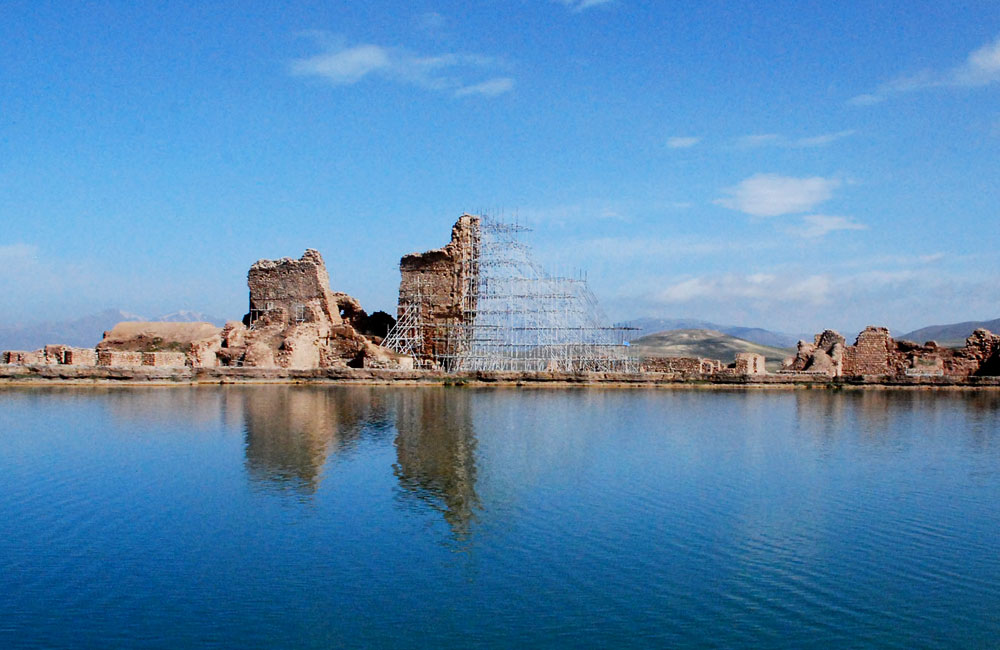The Royal Takht-e Soleyman
Very long before any of us even existed today the magnificent archeological ensemble, Takht-e Soleyman, was built in the valley of a volcano some 2,600 years ago by the Persian Sasanian rulers. The mysterious ensemble holds a very big spiritual significance, dedicated to water and fire. The volcano’s valley has a fortified platform sitting at approximately 60 meters above the plain that features a beautiful artesian lake. The essential buildings beside this lake are the ruins of a Zoroastrian fire temple and a temple dedicated to the divinity of water, Anahita. A Sasanian royal sanctuary also joins these buildings, and surrounding natural environment, to create a spectacularly harmonious layout. Since 2003, this ensemble in West Azerbaijan, Iran, has been officially registered as a UNESCO World Heritage Site. Come along with goingIRAN to learn and discover more about this destination!
In its time, Takht-e Soleyman was the pinnacle sanctuary and place of holy worship of Zoroastrianism. Its fire temple, Azargoshnasb, was known to house one of the three ‘great fires’ of the religion. It was the worshipping place of warriors and kings. East of the fire temple, was Anahita’s temple. In this sacred temple, appreciation for the divinity of the waters was brought to place. Aside from these two temples, the sanctuary and royal residences were built in a square compound. Most of the buildings themselves are even built on a square plan. The significance of the Zoroastrian architecture style seen at this phenomenal age-old site has been carried down and integrated into Christian and Islamic architecture. Although much of this site was destroyed by the end of Sasanian period, some of it was rebuilt under the Mongolian occupation in the 13th century. The fire temple and its western Iwan (part of the building keeping the fire) were all restored. Alongside the restoration some other new buildings such as two beautiful octagonal towers and royal residences were constructed.
Around this area, it is known that the surroundings are much more than just a plat plain. They are indeed, the unexcavated Sasanian town. Many years went by and after the Ilkhanid period (Mongols), the site was completely abandoned. Sitting unvisited for hundreds of years it slowly fell into the ruins it is today. Lying eternally forgotten, a British travel by the name of Sir Robert Ker Porter rediscovered it 1819. It didn’t get much serious attention, however, until 1937 when Erich F. Schmidt photographed it. In 1958 it was intrigued the curiosity of and was further explored by Swedish archeologists. It was only until 1970 that a German archeological organization, R. Naumann and D. Huff, performed the first systematic excavations. This site it definitely recommended for the more serious travellers and ones who wish to view the oldest of oldest sites in the world!
City/Town: West Azarbaijan – Takab
Address: Takht-e Soleyman Area, Takht-e Soleyman Road, Takab – Takht-e Soleyman Roadway. Takab city
Operating Days: Every day
Operating Hours: Hostelry
Typical Price: Free


